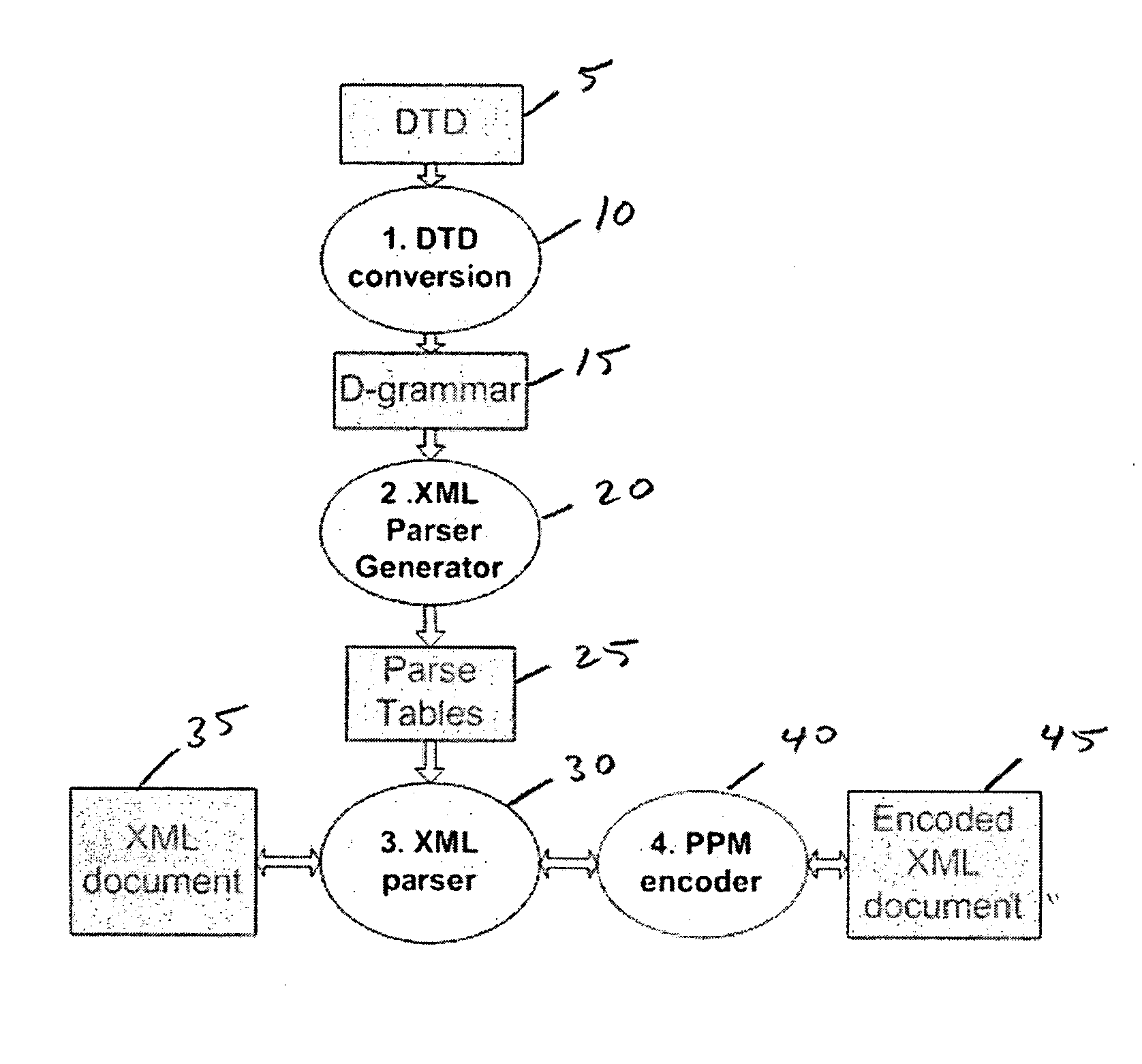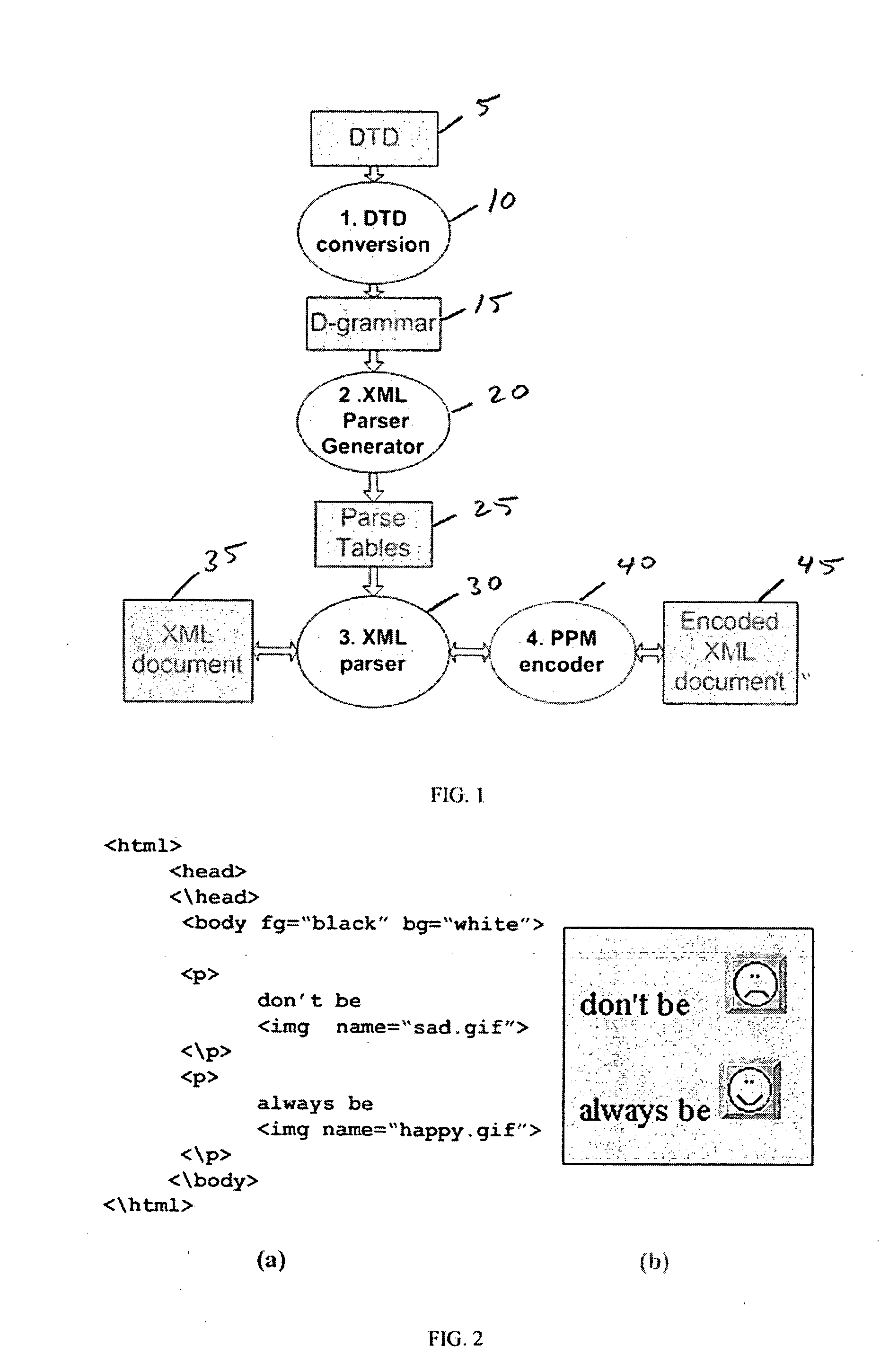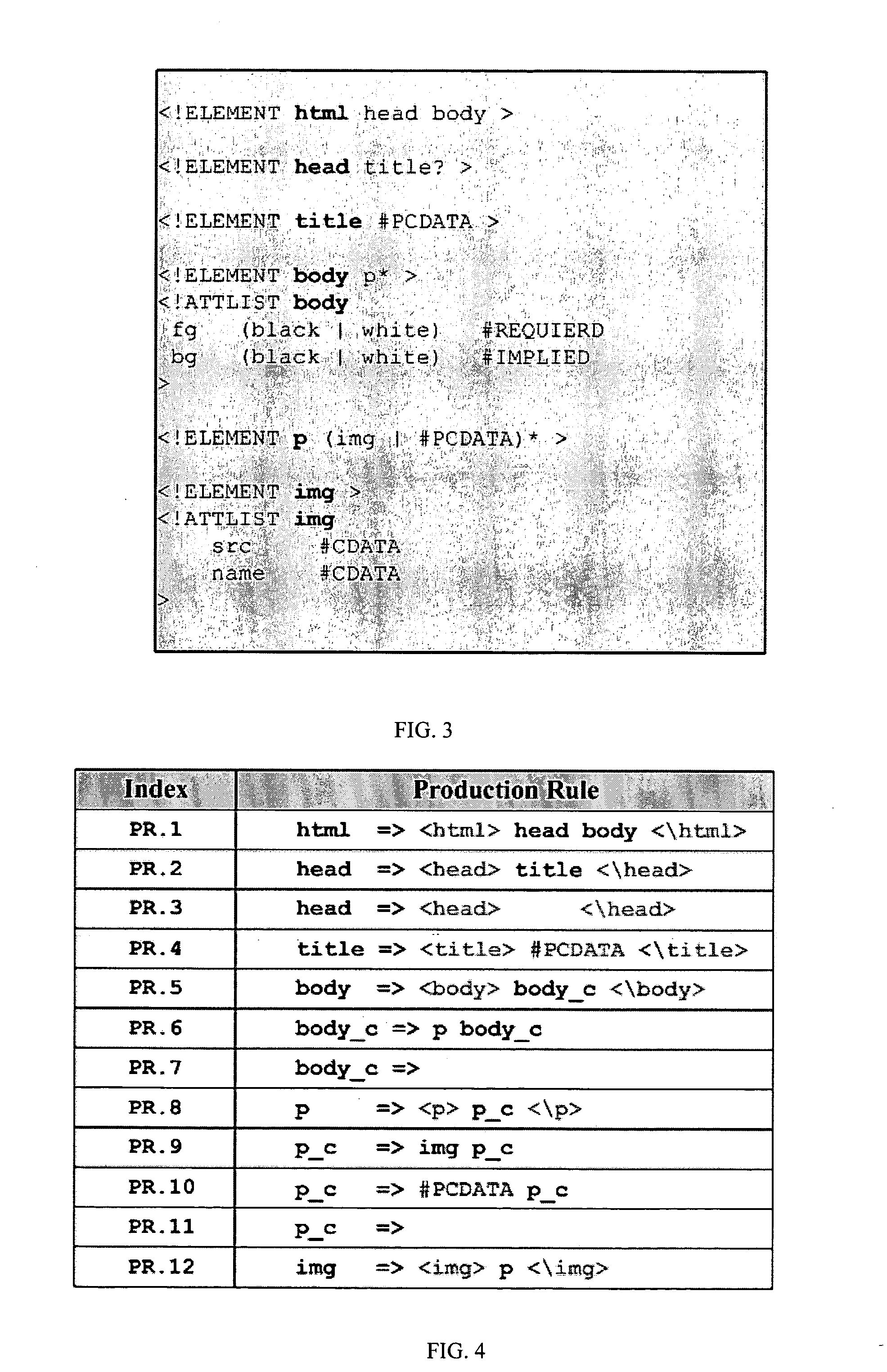XML parser
- Summary
- Abstract
- Description
- Claims
- Application Information
AI Technical Summary
Benefits of technology
Problems solved by technology
Method used
Image
Examples
Embodiment Construction
[0126] The present invention is of a parser-generator, and of the use of the parser so generated for parsing and compressing source code with reference to a syntactic dictionary of that source code. Specifically, the present invention can be used to parse and compress XML code.
[0127] The principles and operation of a parser-generator and of source code compression according to the present invention may be better understood with reference to the drawings and the accompanying description.
The XML Compression Algorithm
[0128] The XML compression algorithm has two sequential components:
[0129] 1. Generation of an XML parser from the DTD of the XML code
[0130] 2. XML compression using the parser from the first component.
[0131] In the first component, the DTD description is converted into a set of regular expressions (RE). Each XML-element is described as a single RE. Then, an XML parser is generated from this description in the following way. A Deterministic Pushdown Transducer, that p...
PUM
 Login to View More
Login to View More Abstract
Description
Claims
Application Information
 Login to View More
Login to View More - R&D
- Intellectual Property
- Life Sciences
- Materials
- Tech Scout
- Unparalleled Data Quality
- Higher Quality Content
- 60% Fewer Hallucinations
Browse by: Latest US Patents, China's latest patents, Technical Efficacy Thesaurus, Application Domain, Technology Topic, Popular Technical Reports.
© 2025 PatSnap. All rights reserved.Legal|Privacy policy|Modern Slavery Act Transparency Statement|Sitemap|About US| Contact US: help@patsnap.com



